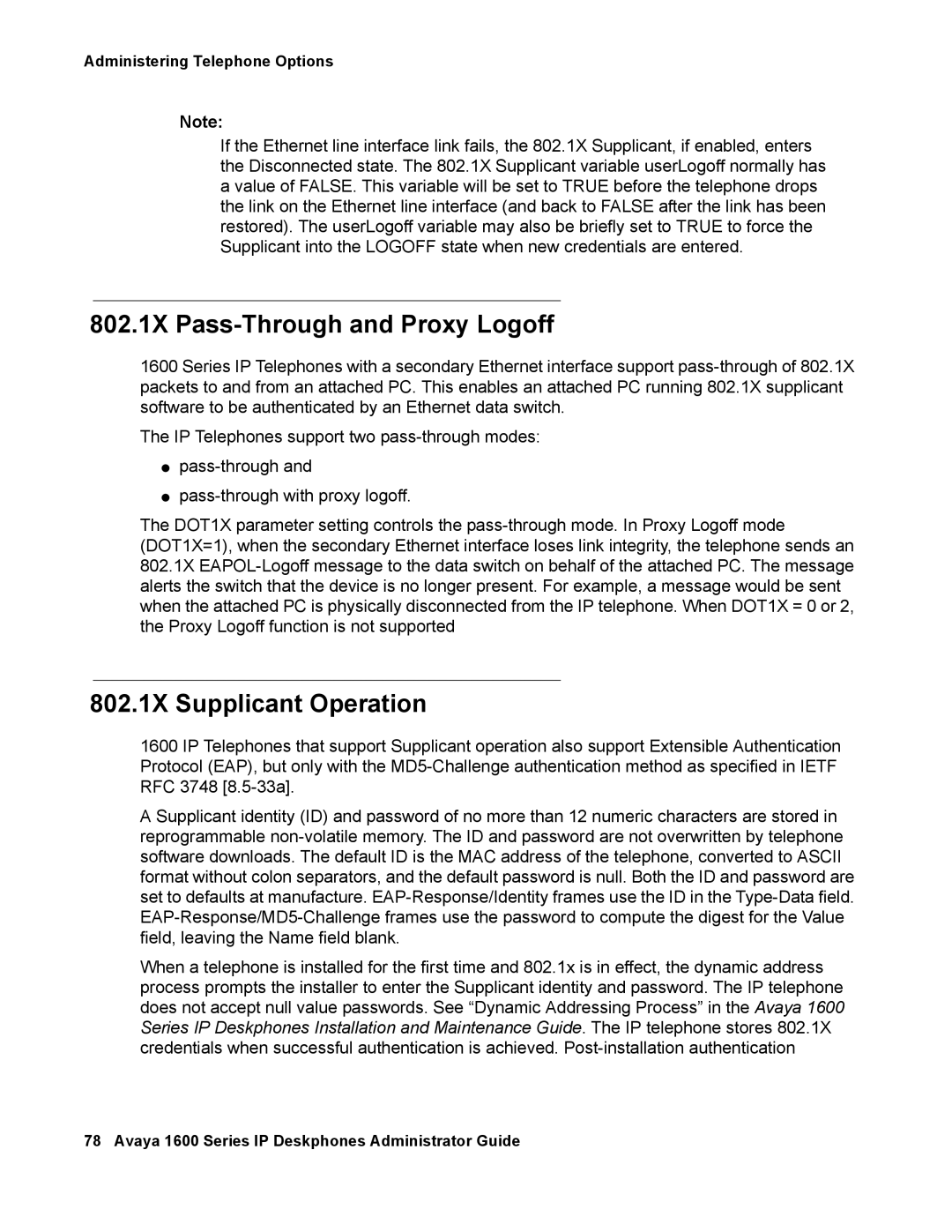
Administering Telephone Options
Note:
If the Ethernet line interface link fails, the 802.1X Supplicant, if enabled, enters the Disconnected state. The 802.1X Supplicant variable userLogoff normally has a value of FALSE. This variable will be set to TRUE before the telephone drops the link on the Ethernet line interface (and back to FALSE after the link has been restored). The userLogoff variable may also be briefly set to TRUE to force the Supplicant into the LOGOFF state when new credentials are entered.
802.1X Pass-Through and Proxy Logoff
1600 Series IP Telephones with a secondary Ethernet interface support
The IP Telephones support two
●
●
The DOT1X parameter setting controls the
802.1X Supplicant Operation
1600 IP Telephones that support Supplicant operation also support Extensible Authentication Protocol (EAP), but only with the
A Supplicant identity (ID) and password of no more than 12 numeric characters are stored in reprogrammable
When a telephone is installed for the first time and 802.1x is in effect, the dynamic address process prompts the installer to enter the Supplicant identity and password. The IP telephone does not accept null value passwords. See “Dynamic Addressing Process” in the Avaya 1600 Series IP Deskphones Installation and Maintenance Guide. The IP telephone stores 802.1X credentials when successful authentication is achieved.
78 Avaya 1600 Series IP Deskphones Administrator Guide
